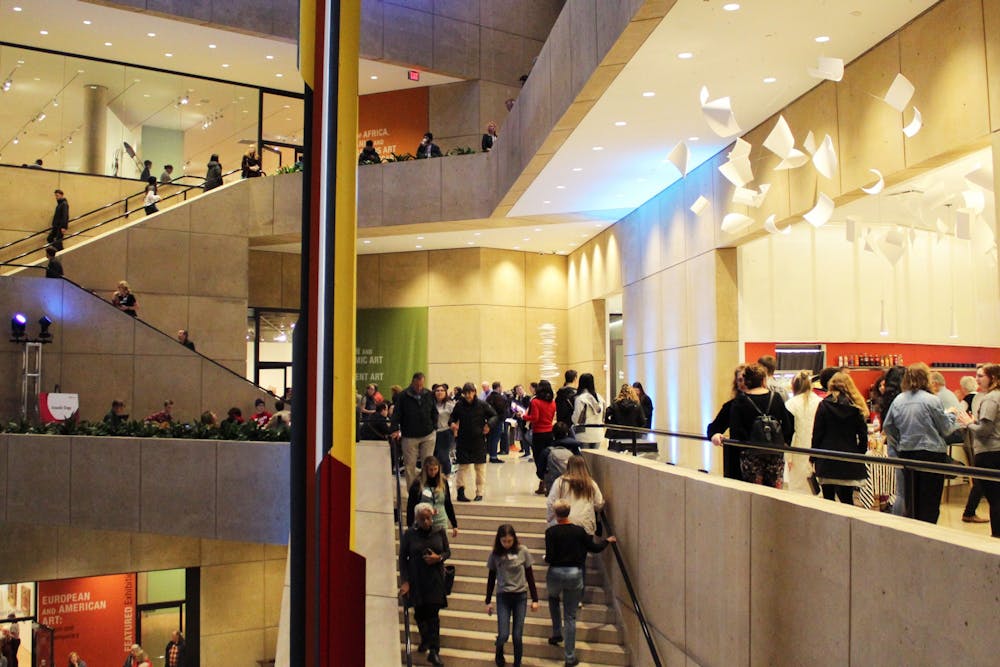The Eskenazi Museum of Art, a modernist concrete building near the center of campus, reopened in November 2019 after an almost two-year renovation. It is one of the largest college art collections in the U.S.
In addition to its seven permanent galleries, there are two rotating special exhibitions. One of the rotating galleries displays recent modern acquisitions, and the other focuses on the life and artwork of American artist Jim Dine.
The gallery has about 1,400 pieces on display but has nearly 45,000 in its possession that are constantly rotated. Because the museum is only able to display so many things at one time, rotating allows people to see new things, said Galina Olmsted, curator and art specialist at the museum.
Olmsted said one of her favorite exhibits is within the American and European section. Here prominent French Impressionists are displayed, including Claude Monet. Olmsted said her favorite work in the gallery is that of Gustave Caillebotte. Though he is one of the lesser-known painters in the Impressionist movement, she said she feels his artwork anchors the collection.
“This is one of the best paintings of Caillebotte anywhere in the U.S.,” Olmsted said. “We are the only university museum to have one, and we have one of the best.”
Within the same gallery is a detailed landscape painting of a distant view of Mexico City by José María Velasco. Velasco’s close attention to detail and traditional techniques of painting make it shocking that he was the teacher of renowned Mexican artist Diego Rivera, Olmsted said. Though the two artists are not displayed next to each other in the museum, Olmsted stressed the importance of the connection between the two.
Another relationship displayed is between Japanese American Shinkichi Tajiri and African American artist Harold Cousins. The two artists left America in the 1900s for more accepting views in Paris. Tajiri taught Cousins technique, and now the two are displayed side-by-side in the modern art gallery at the museum. The two metal sculptures are starkly different.
“Artists are working with the same techniques and materials but arriving at radically different conclusions,” Olmsted said.
The relationships between artists as well as the history are explained in the labels near the artwork and audio guides provided for free at the museum. The museum is open 10 a.m. to 5 p.m. Tuesday through Friday and Sunday and 10 a.m to 7 p.m. Saturday. It is closed on Monday.
For more information visit their website at https://artmuseum.indiana.edu/




